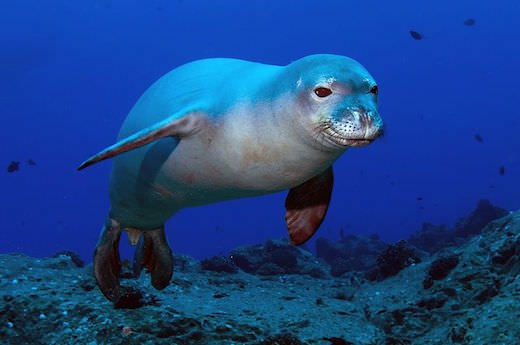Hawaiian Monk Seal

Critically endangered
This species of seal is an earless species located, not surprisingly, in and around the islands of Hawaii. There are actually two separate species of monk seal: The Hawaiian monk seal, and the Mediterranean monk seal, which is native to the Mediterranean. There was however, also another species known as the Caribbean monk seal, but that species is now unfortunately extinct. They’re best described as brown to gray-brown on their dorsal side, whilst being much lighter on their ventral side. Currently, their population stands at roughly 1100 seals and they consume roughly around 6 and 13% of their body mass in food every single day. Their diets are made up of fish and seafood and as there are numerous coral reefs in their native areas, this provides them with perfect conditions for fishing for food. They can grow up to 3 metres in length, with no real size differences between the males and females. They get their names because they have a distinctive fold of skin that is similar in appearance to the cowl of a monk.
Population Distribution
As mentioned, their population stands at around 1100 seals, native mainly to Hawaii, specifically the North western Hawaiian Islands. What is interesting to note is that most seals thrive in much colder waters and much colder climes, but Hawaiian monk seals prefer the warmer waters and soft sands.
Threats
Hawaiian monk seals reside in areas with low human populations, yet despite this, human beings still play and played a role in their dramatic decline in a few different ways. Climate change, entanglement, and food limitations all pose serious threats to these seals. As overfishing is a serious issue, there are much less fishes in the water and so food is scarce for the seals. On top of this, they also find themselves being hunted and killed by larger predators such as sharks. Disease and entanglement has also played a part in their decline. What’s especially disheartening however, is that experts believe these seals have been present on Hawaiian islands for millions upon millions of years where they once thrives. Now there is around 1100 – 1200 remaining.